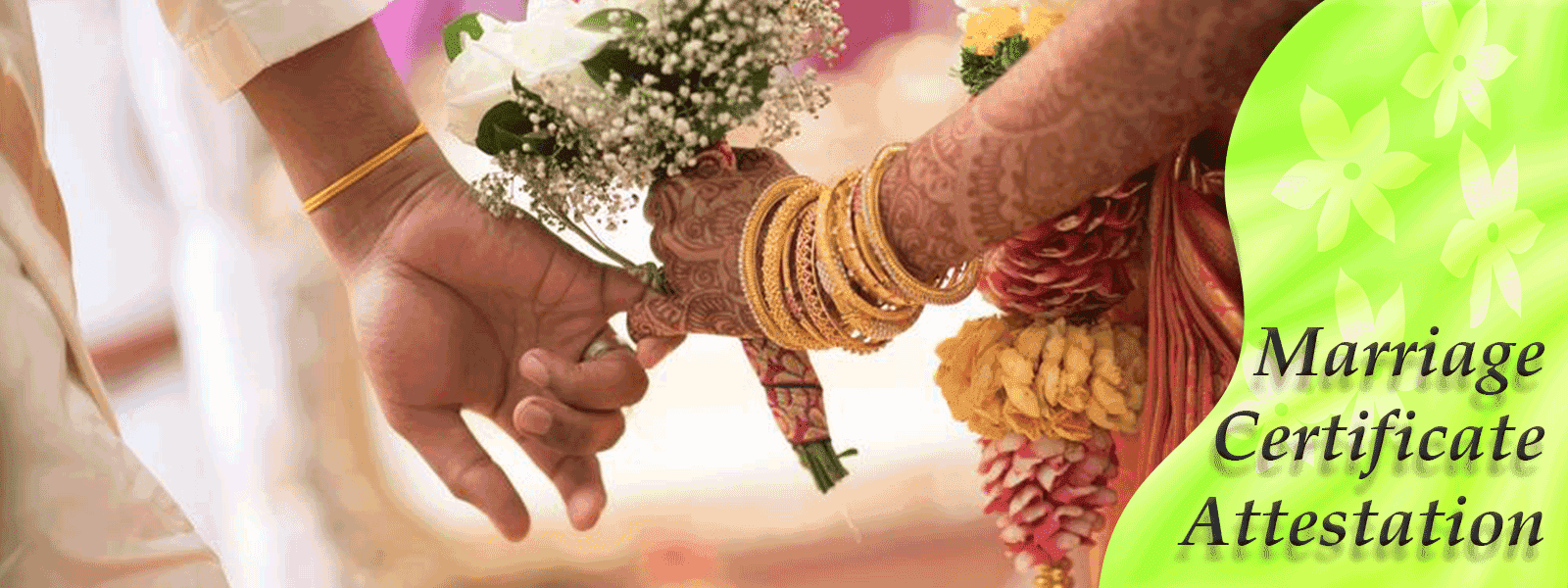Unlocking the Journey: Demystifying Marriage Certificate Attestation Procedures

Introduction
In the intricate web of legalities surrounding international documentation, the process of marriage certificate attestation stands as a crucial step for couples venturing into foreign lands. This comprehensive guide aims to unravel the intricacies of marriage certificate attestation, shedding light on the necessary procedures and steps involved.
Understanding Marriage Certificate Attestation
Marriage certificate attestation is the official validation of a marriage certificate for use in a foreign country. This process ensures that your marital status is recognized and accepted by authorities in another nation. Whether you're relocating, pursuing higher education, or seeking employment abroad, having your marriage certificate attested is often a prerequisite.
Why is Marriage Certificate Attestation Necessary?
- Legal Recognition: Attesting your marriage certificate provides legal recognition of your marital status in a foreign country.
- Residency and Visa Purposes: Many countries require attested marriage certificates for visa and residency applications.
- Educational Pursuits: Attestation is often mandatory for couples planning to pursue education abroad.
- Employment Opportunities: Certain employers abroad may request attested marriage certificates as part of the hiring process.
Steps Involved in Marriage Certificate Attestation
The attestation process typically comprises the following steps:
- Notarization:
- Begin by notarizing your marriage certificate from a recognized notary public.
- This step ensures the authenticity of the document.
- Submit the notarized certificate to the home department of the issuing state for further verification.
- The department will affix a seal, confirming the authenticity of the notary's signature.
- After home department attestation, the document is forwarded to the MEA for final verification.
- The MEA confirms the authenticity of the document at the national level.
- The attested document is then submitted to the embassy of the destination country.
- The embassy verifies the document and provides the necessary attestation.
- In some cases, the document may need attestation from the foreign ministry of the destination country for additional validation.
Conclusion
Navigating the labyrinth of marriage certificate attestation may seem daunting, but understanding the step-by-step process is the key to a seamless experience. Whether you're embarking on a new chapter of life abroad or simply preparing for unforeseen opportunities, having your marriage certificate attested ensures that you're legally equipped for the journey ahead. Don't let the paperwork become a hurdle – embrace the process, and open the door to new horizons.
In summary, marriage certificate attestation is a vital aspect of international documentation, ensuring legal recognition and acceptance of your marital status in foreign jurisdictions. By following the prescribed steps, you can confidently embark on your journey, armed with the attested proof of your union.
- Industry
- Art
- Causes
- Crafts
- Dance
- Drinks
- Film
- Fitness
- Food
- Spiele
- Gardening
- Health
- Home
- Literature
- Music
- Networking
- Other
- Party
- Religion
- Shopping
- Sports
- Theater
- Wellness
- News


